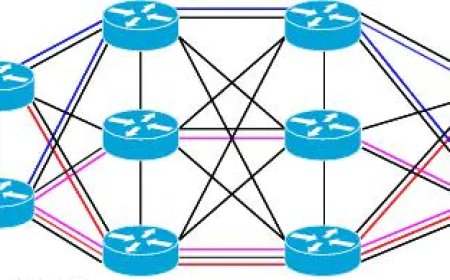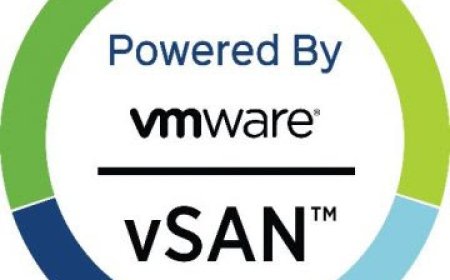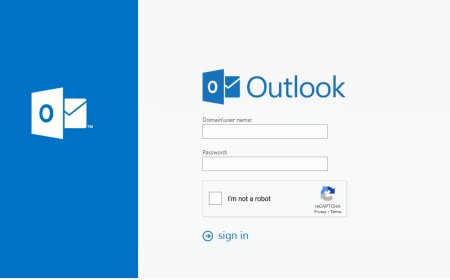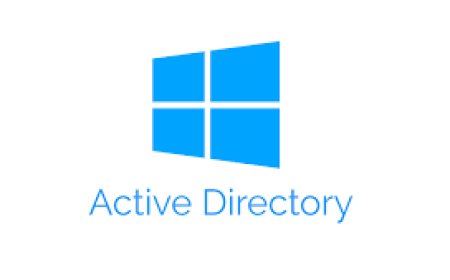Cloud Computing Explained
Cloud computing is a technology that enables the delivery of computing resources, including servers, storage, and software, over the internet. The concept of cloud computing has been around for decades, but it has only recently become widely adopted. This post gives information about the history of cloud computing, its benefits, its disadvantages, its definitions, and future expectations.
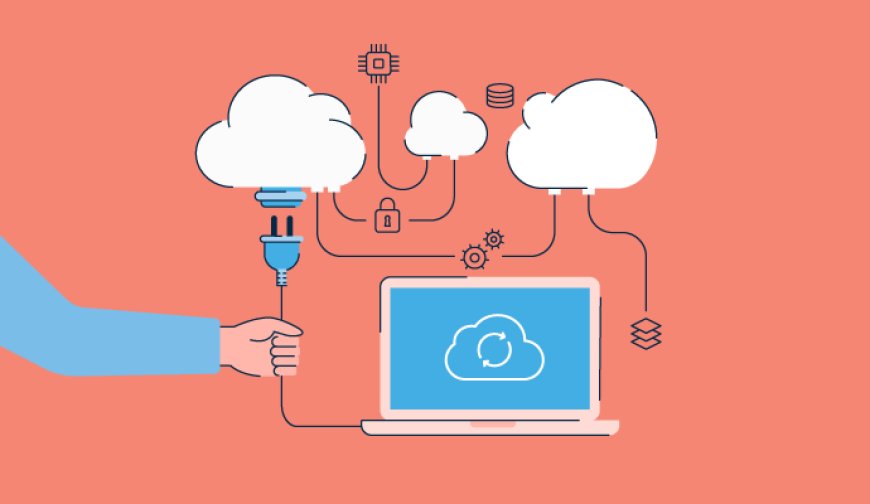
GOOD 2 KNOW TERMS
-
Public cloud: A cloud computing model in which services are provided over the internet by a third-party provider, and are available to anyone who wants to use them.
-
Private cloud: A cloud computing model in which services are provided over a private network, and are only available to a specific organization or group of users.
-
Cloud storage: A service that allows users to store and retrieve data over the internet.
-
Cloud Backup: A service that allows users to back up their data to a remote location over the internet.
-
Cloud Security: A set of security measures designed to protect data and applications stored in the cloud.
-
Cloud Scalability: The ability of a cloud service to increase or decrease its capacity as needed.
-
Cloud Automation: The use of software tools and scripts to automate the provisioning and management of cloud resources.
-
Cloud Orchestration: The process of coordinating and automating the deployment and management of cloud resources.
-
Cloud Management: The process of managing and maintaining cloud resources.
-
Cloud Migration: The process of moving data, applications, and workloads to the cloud.
-
Cloud Provider: A company that provides cloud computing services.
-
Cloud Broker: A company that acts as a middleman between cloud providers and customers.
-
Cloud Federation: The ability to connect and use multiple cloud providers' services to meet an organization's specific needs.
-
Cloud Bursting: The ability to temporarily scale up cloud resources to handle sudden spikes in demand.
-
Cloud Native: Applications or services that are designed to be run in the cloud and take advantage of cloud-specific features and services.
-
Cloud Optimization: The process of improving the performance, cost-efficiency, and scalability of cloud resources.
-
Cloud Governance: The set of policies, standards, and procedures that govern the use of cloud resources within an organization.
-
Cloud Compliance: The process of ensuring that cloud resources and services comply with relevant regulations and standards.
-
Cloud Monitoring: The process of tracking and analyzing the performance, security, and utilization of cloud resources.
-
Cloud Self-Service: A service that allows users to provision and manage cloud resources on their own, without the need for IT involvement.
-
Cloud Cost Management: The process of managing and controlling the cost of cloud resources.
-
Cloud Disaster Recovery: A service that allows organizations to quickly restore critical data and applications in the event of a disaster.
-
Cloud Service Level Agreement (SLA): A contract between a cloud provider and a customer that outlines the level of service, availability, and performance that the provider guarantees.
-
Cloud Virtualization: The process of creating a virtual version of a physical resource, such as a server or storage device, in the cloud.
-
Cloud Interoperability: The ability of cloud services and applications to work seamlessly with other cloud services and applications.
-
Cloud Identity and Access Management (IAM): A service that controls and manages access to cloud resources based on user identity and permissions.
-
Cloud API: A set of programming interfaces that allow applications to interact with cloud services and resources.
-
Cloud Identity Federation: The process of connecting and using multiple identity providers to manage access to cloud resources.
-
Cloud Resource Pooling: The ability of cloud providers to dynamically allocate and reallocate resources based on demand.
-
Cloud Elasticity: The ability of cloud resources to automatically scale up or down as needed.
-
Cloud On-demand: A service that allows users to provision and de-provision cloud resources as needed, without a long-term commitment.
-
Cloud Management Platform (CMP): A software tool that allows organizations to centrally manage and monitor their cloud resources and services.
DEFINITION
The history of cloud computing can be traced back to the 1960s when computer scientists at the Massachusetts Institute of Technology (MIT) began experimenting with the idea of providing computing resources over a network. However, it was not until the early 2000s that cloud computing began to gain traction as a viable business model. In 2006, Amazon Web Services (AWS) launched its first cloud computing services, and since then, many other companies, including Microsoft, Google, and IBM, have followed suit.
There are many benefits of cloud computing but one of the main is its cost-effectiveness. Instead of having to invest in expensive hardware and software, businesses can simply pay for the resources they need on an as-needed basis. This can save companies a significant amount of money, especially for those with fluctuating computing needs. Additionally, cloud computing allows for greater flexibility and scalability, as businesses can easily increase or decrease the amount of resources they use as needed.
And of course there are some disadvantages. One of the main concerns is security. As data and applications are stored on remote servers, they can be vulnerable to cyber attacks. Additionally, there is a risk of data loss if a cloud provider experiences a outage or goes out of business. Furthermore, cloud computing can also be subject to vendor lock-in, which means that a business may find it difficult to switch to a different provider once it has become dependent on a particular cloud service.
There are different types of cloud computing models. The definitions of the models are described later.
In the future, it is expected that cloud computing will continue to evolve and become even more integrated into our daily lives. One of the main areas of growth is expected to be in the area of edge computing, which involves running computing and data storage resources on the edge of the network, closer to the devices that need to access them. Additionally, it is also likely that we will see an increase in the use of artificial intelligence (AI) and machine learning (ML) in cloud computing, which will allow for even greater automation and efficiency.
MODELS
Infrastructure as a Service (IaaS) is a cloud computing model that provides virtualized computing resources, such as servers, storage, and networking, over the internet. The main idea behind IaaS is to provide businesses with a way to access and use computing resources on an as-needed basis, without the need to invest in and maintain their own physical infrastructure. IaaS is also known as "Hardware as a Service".
One of the main advantages of IaaS is its cost-effectiveness. Instead of having to invest in expensive hardware and software, businesses can simply pay for the resources they need on an as-needed basis. This can save companies a significant amount of money, especially for those with fluctuating computing needs. Additionally, IaaS allows for greater flexibility and scalability, as businesses can easily increase or decrease the amount of resources they use as needed.
Examples: Amazon Web Services (AWS), Microsoft Azure, Google Cloud Platform, and DigitalOcean. These providers offer a range of services, including virtual servers, storage, and networking, that businesses can use to build and run their own applications. For example, a business could use AWS to run a web server, store data in a cloud-based database, and use virtual private networks (VPNs) to securely connect to their own data center.
Another example is a company that wants to expand its operations but doesn't have the capital to invest in expensive IT infrastructure. IaaS allows them to rent virtual servers, storage, and network resources, so they can scale up or down as needed. In this way, they can increase their capacity during peak periods and reduce it during slow periods, without having to invest in expensive hardware.
Summary: IaaS is a cloud computing model that provides virtualized computing resources over the internet on a pay-as-you-go basis. Businesses can use IaaS to access the computing resources they need without having to invest in and maintain their own physical infrastructure. The benefits of IaaS include cost-effectiveness, flexibility, and scalability, and examples of IaaS providers are Amazon Web Services, Microsoft Azure, Google Cloud Platform, and DigitalOcean.
Platform as a Service (PaaS) is a cloud computing model that provides a platform for developing, testing, and deploying applications over the internet. PaaS is built on top of IaaS and provides developers with a complete environment for building and running their applications, including pre-configured servers, storage, and networking resources, as well as development tools and frameworks.
One of the main advantages of PaaS is that it allows developers to focus on creating and improving their applications, without having to worry about the underlying infrastructure. PaaS providers take care of the maintenance and management of the infrastructure, including security, scalability, and availability. Additionally, PaaS allows for faster development and deployment of applications, as developers can use pre-configured resources, development tools and frameworks, and can easily scale up or down as needed.
Examples: AWS Elastic Beanstalk, Google App Engine, and Microsoft Azure App Service. These providers offer a range of services, including development frameworks, databases, and deployment tools, that developers can use to build and run their applications. For example, a developer could use AWS Elastic Beanstalk to build and deploy a Java web application, without having to worry about provisioning and configuring the underlying servers, storage, and networking resources.
Another example is a company that wants to develop an application to improve its internal processes. PaaS allows developers to use pre-configured servers, storage, and networking resources, as well as development tools and frameworks, to quickly build and deploy the application. PaaS provider will take care of the underlying infrastructure, so the company can focus on developing and improving the application.
Summary: PaaS is a cloud computing model that provides a platform for developing, testing and deploying applications over the internet. PaaS is built on top of IaaS and provides developers with a complete environment for building and running their applications, including pre-configured servers, storage, networking resources, development tools and frameworks. The benefits of PaaS include faster development and deployment of applications, developers can focus on creating and improving applications instead of worrying about the underlying infrastructure and scalability. Examples of PaaS providers include AWS Elastic Beanstalk, Google App Engine, and Microsoft Azure App Service.
Software as a Service (SaaS) is a cloud computing model that provides access to software applications over the internet. SaaS is built on top of IaaS and PaaS, and allows businesses and individuals to use software applications without having to install or maintain them on local devices. The SaaS provider takes care of the maintenance and management of the software and underlying infrastructure.
One of the main advantages of SaaS is that it is highly convenient and cost-effective. Businesses can simply pay for the software they need on an as-needed basis, without having to invest in expensive licenses or infrastructure. Additionally, SaaS allows for greater flexibility and scalability, as businesses can easily increase or decrease the number of users or the amount of storage they need.
Examples: Salesforce, Microsoft Office 365, and Google Workspace. These providers offer a range of software applications, such as customer relationship management (CRM), productivity, and collaboration tools that businesses and individuals can use to improve their work processes. For example, a business could use Salesforce to manage its customer relationships, or an individual could use Microsoft Office 365 to create and edit documents and spreadsheets.
Another example is a small business that wants to have a website but doesn't have the resources to maintain the website by their own. SaaS providers offer website building and hosting services, so the business can easily create and manage their website without having to worry about the underlying infrastructure.
Summary: SaaS is a cloud computing model that provides access to software applications over the internet. SaaS is built on top of IaaS and PaaS, and allows businesses and individuals to use software applications without having to install or maintain them on local devices. The benefits of SaaS include convenience, cost-effectiveness, and scalability. Examples of SaaS providers include Salesforce, Microsoft Office 365, and Google Workspace. These providers offer a range of software applications that can be used to improve work processes and manage customer relationship.
Function as a Service (FaaS) is a cloud computing model that allows developers to run small, single-purpose functions over the internet, without the need to manage the underlying infrastructure. FaaS is based on serverless architecture, which means that the cloud provider is responsible for running the servers and scaling them up or down based on the demand. This allows developers to focus on writing and deploying code, without having to worry about the underlying infrastructure.
One of the main advantages of FaaS is its cost-effectiveness. Instead of having to pay for and maintain servers, developers only pay for the resources their functions use when they are running. Additionally, FaaS allows for greater scalability, as the cloud provider automatically scales the function up or down based on the demand.
Examples: AWS Lambda, Azure Functions, and Google Cloud Functions. These providers offer a range of services that developers can use to run their functions, including development frameworks, deployment tools, and monitoring and debugging tools. For example, a developer could use AWS Lambda to run a Python function that processes images uploaded to an S3 bucket, and the service will automatically scale up or down based on the number of images being processed.
Another example is a company that wants to develop a chatbot for their website. The chatbot will only be triggered when a customer is interacting with the chatbot. With FaaS, the company can develop the chatbot and the cloud provider will only charge them when the chatbot is running and the customer is interacting with it.
Summary: FaaS is a cloud computing model that allows developers to run small, single-purpose functions over the internet, without the need to manage the underlying infrastructure. FaaS is based on serverless architecture, which means that the cloud provider is responsible for running the servers and scaling them up or down based on the demand. The benefits of FaaS include cost-effectiveness, scalability and focusing on writing and deploying code without worrying about the underlying infrastructure. Examples of FaaS providers include AWS Lambda, Azure Functions and Google Cloud Functions.
Container as a Service (CaaS) is a cloud computing model that allows businesses to run and manage containerized applications in a cloud environment. A container is a lightweight, stand-alone, executable package that includes everything needed to run a piece of software, including the code, runtime, system tools, libraries, and settings. Containers are different from VMs as they share the host operating system kernel, making them more lightweight, efficient, and portable.
CaaS provides businesses with a way to easily manage and scale their containerized applications without having to invest in and maintain their own infrastructure. The cloud provider takes care of the infrastructure, including the management and scaling of the containers, security, and availability.
Examples: AWS Elastic Container Service (ECS), Azure Container Instances (ACI), and Google Kubernetes Engine (GKE). These providers offer a range of services that businesses can use to run and manage their containerized applications, including orchestration tools, monitoring, and scaling. For example, a business could use AWS ECS to run and manage a containerized application that processes data, and the service will automatically scale the number of containers based on the amount of data being processed.
Another example is a company that wants to develop an e-commerce website. They can use containerization to deploy different parts of the application, such as the front-end, back-end, and database, in separate containers. This way, it makes the deployment and scaling of each component individually. With the help of a CaaS provider, the company can easily manage and scale their containerized applications without having to invest in and maintain their own infrastructure.
Summary: CaaS is a cloud computing model that allows businesses to run and manage containerized applications in a cloud environment. A container is a lightweight, stand-alone, executable package that includes everything needed to run a piece of software, and it is different from virtual machines (VMs) as they share the host operating system kernel. CaaS provides businesses with a way to easily manage and scale their containerized applications without having to invest in and maintain their own infrastructure. Examples of CaaS providers include AWS Elastic Container Service (ECS), Azure Container Instances (ACI), and Google Kubernetes Engine (GKE). These providers offer a range of services that businesses can use to run and manage their containerized applications.
Hybrid cloud is a cloud computing model that combines the use of different types of cloud environments, such as public cloud, private cloud, and on-premises resources. This approach allows organizations to run workloads on multiple cloud environments or on-premises, depending on their specific requirements.
One of the main advantages of hybrid cloud is that it allows organizations to take advantage of the benefits of different types of cloud environments. For example, they can use public cloud for non-sensitive workloads that require scalability and cost-effectiveness, and private cloud for sensitive workloads that require greater control and security. Additionally, hybrid cloud allows organizations to take advantage of existing on-premises resources, such as legacy systems, without having to fully migrate them to the cloud.
Examples: AWS Outposts, Azure Arc, and Google Anthos. These providers offer a range of services that organizations can use to run workloads on multiple cloud environments or on-premises, depending on their specific requirements. For example, an organization could use AWS Outposts to run workloads on AWS in their own data center, while also taking advantage of the scalability and cost-effectiveness of the public cloud.
Another example is a company that wants to use the public cloud for some of its workloads, such as web-based applications, but wants to keep some of its workloads, such as databases, on-premises. With a hybrid cloud approach, the company can take advantage of the scalability and cost-effectiveness of the public cloud for its web-based applications, while maintaining the security and control of its on-premises databases.
Summary: Hybrid cloud is a cloud computing model that combines the use of different types of cloud environments, such as public cloud, private cloud, and on-premises resources. This approach allows organizations to run workloads on multiple cloud environments or on-premises, depending on their specific requirements. The benefits of Hybrid cloud include the ability to take advantage of the benefits of different types of cloud environments, and the ability to take advantage of existing on-premises resources. Examples of hybrid cloud providers include AWS Outposts, Azure Arc, and Google Anthos. These providers offer a range of services that organizations can use to run workloads on multiple cloud environments or on-premises.
HOW TO PICK THE BEST PROVIDER?
Since there are different models and requirements, selecting the best cloud provider can be a complex process. Organizations should consider some key factors to evaluate different providers.
-
Service offerings: Make sure the provider offers the specific services and features that you need, such as storage, computing power, and software.
-
Security: Make sure the provider offers robust security measures to protect your data, such as encryption, access controls, and compliance with relevant regulations.
-
Reliability: Make sure the provider has a track record of uptime and availability, and that they offer disaster recovery and business continuity services.
-
Scalability: Make sure the provider can easily scale resources up or down as needed to meet changing demands.
-
Support: Make sure the provider offers comprehensive support, including technical assistance and troubleshooting.
-
Cost: Compare the costs of different providers, including any additional costs for services, such as data transfer and storage.
-
Flexibility: Make sure the provider can easily integrate with your existing systems, and that they offer a range of deployment options, such as public, private, and hybrid cloud.
-
Compliance: Make sure the provider complies with the relevant regulations and standards.
-
Service Level Agreement: Make sure the provider offers a SLA that guarantees a certain level of service, availability, and performance.
-
Reputation and references: Research the provider's reputation in the market and reach out to other companies that have already used their services for their feedback.
*****Organizations' requirements change over time, so it is good to review the selection periodically and reasses whether provider meet the needs or if it is time to change the provider.
What's Your Reaction?









